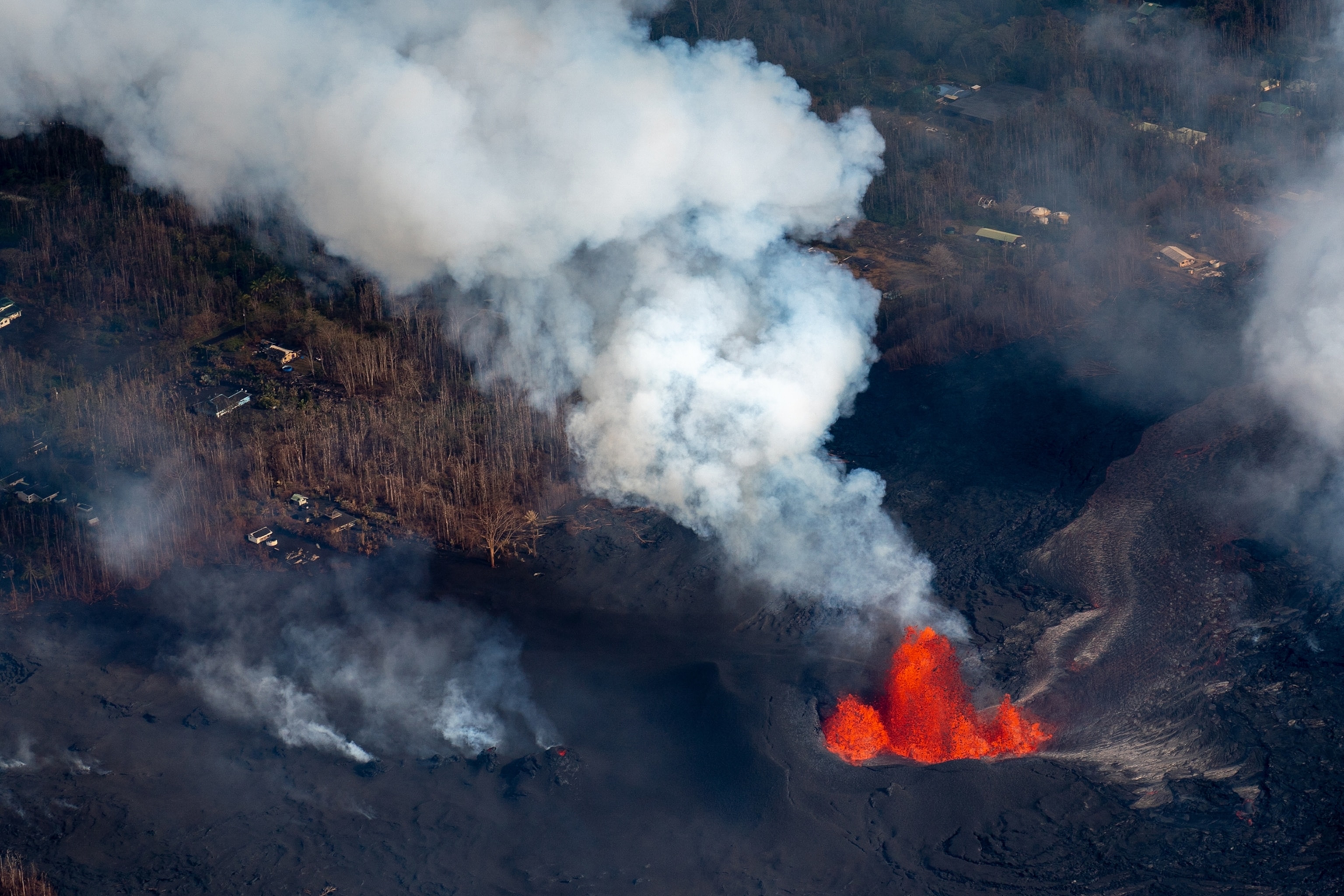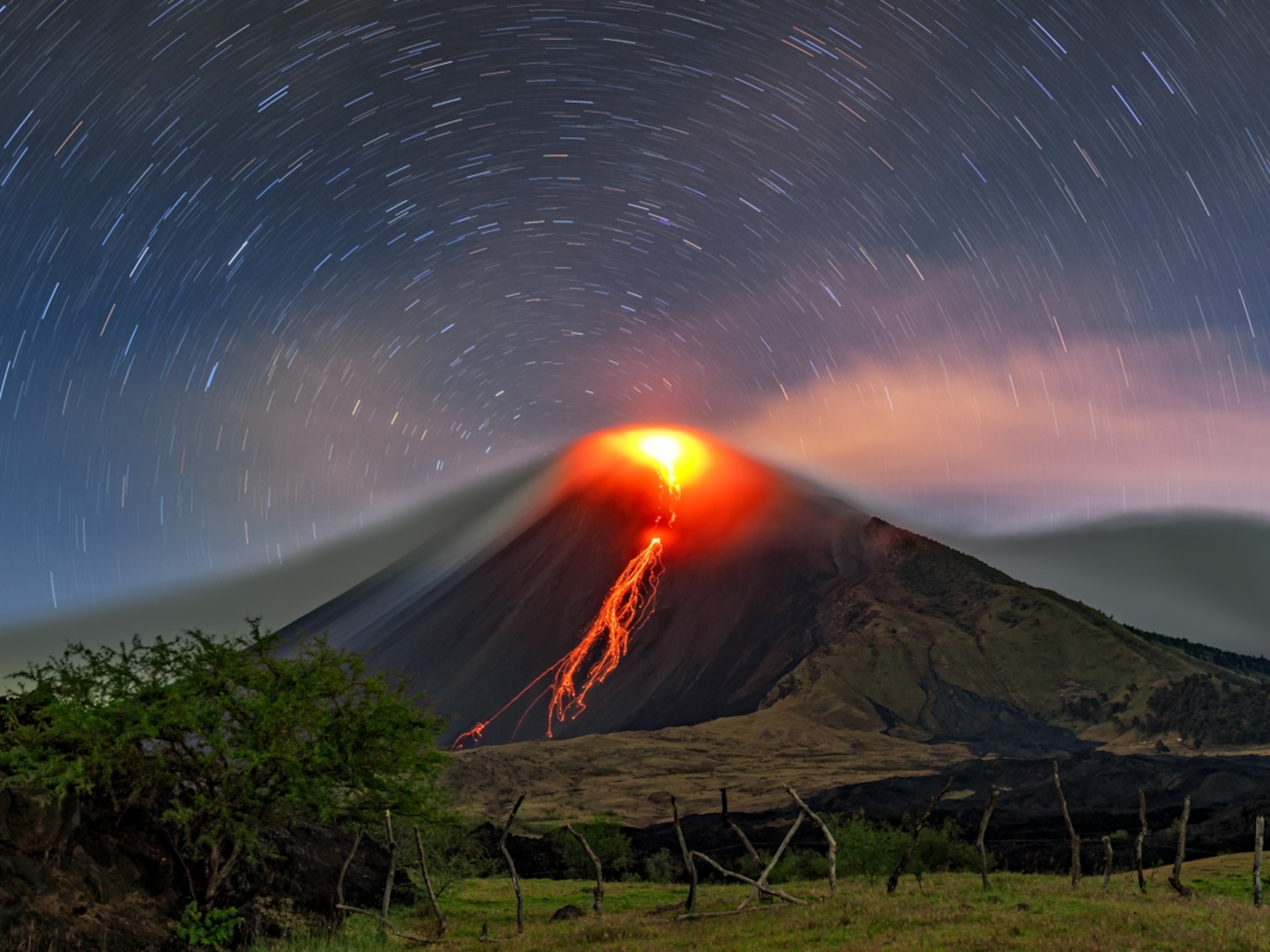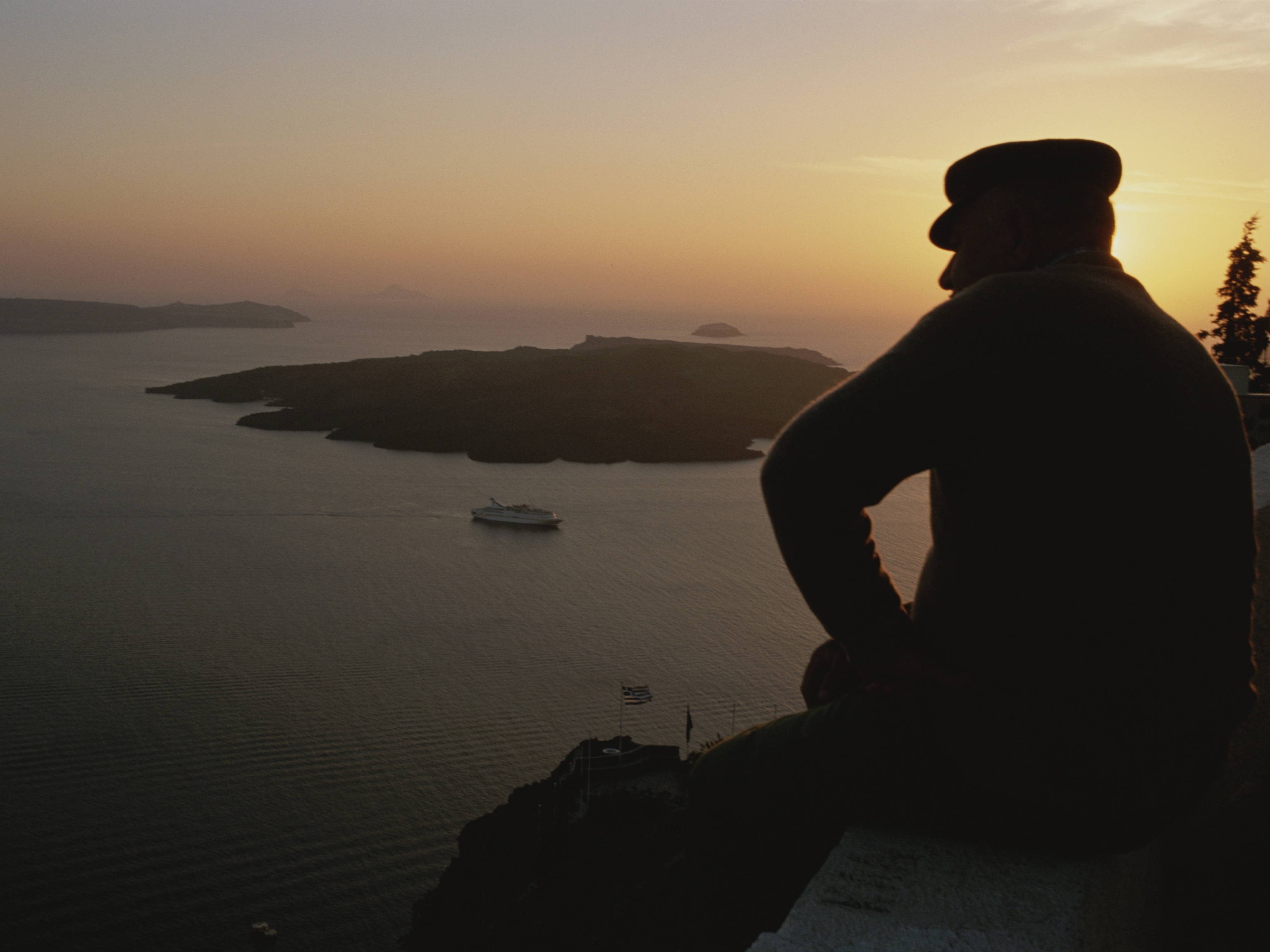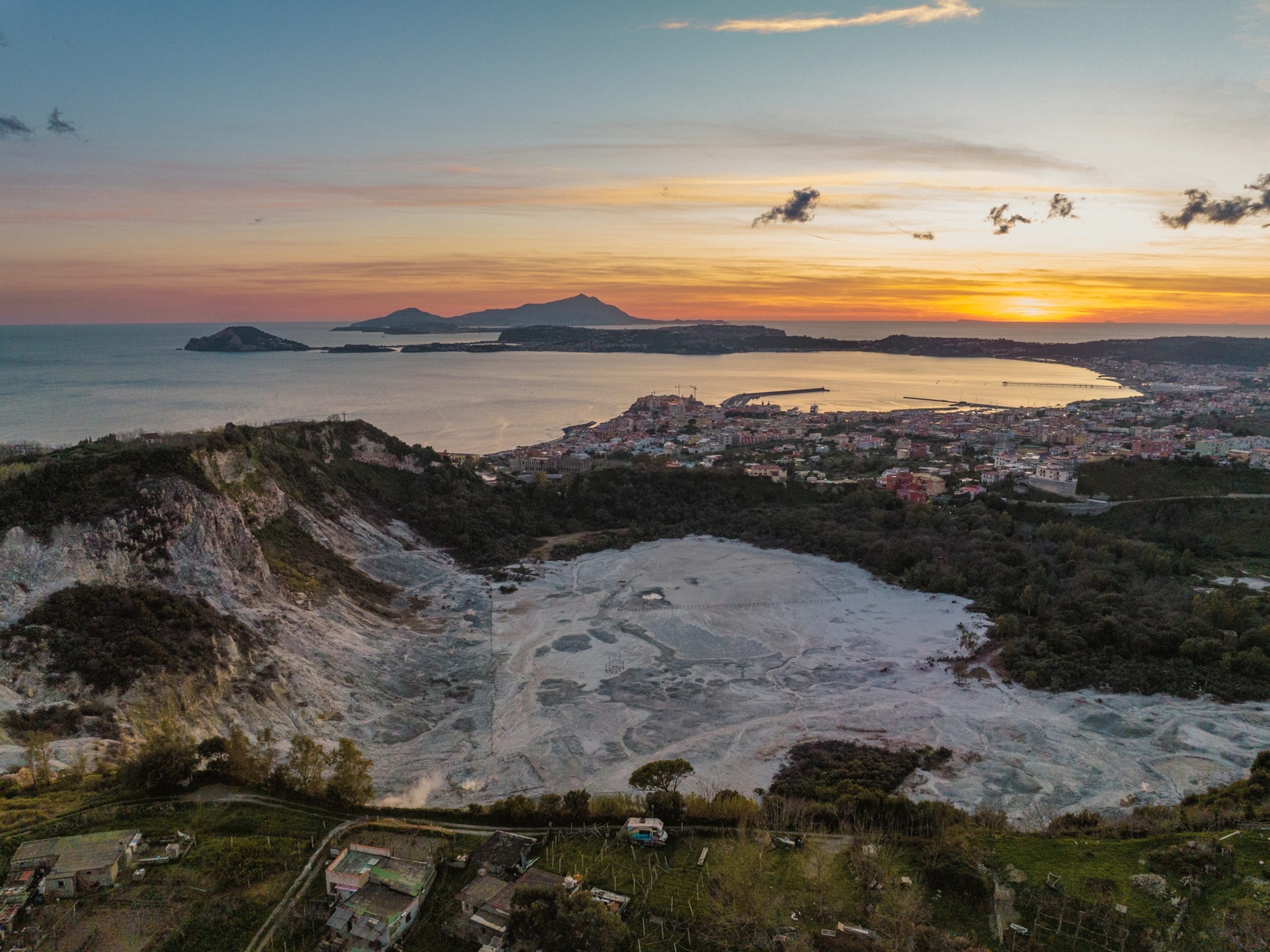Without volcanoes, there would be no Hawaii. The eight primary islands that make up this archipelago owe their existence to a roiling spot of magma deep under the ocean floor known as the Hawaii hotspot.
The hotspot is thought to lurk for now below the archipelago's youngest and most active landmass, the Big Island of Hawaii. Its molten rock fuels the eruption of this island's four active volcanoes: Mauna Loa, Kīlauea, Hualālai, and the offshore underwater volcano Lōihi.
While the hotspot itself remains largely stationary, the overriding Pacific plate does not; it creeps northwest at a rate of three to four inches each year. Because of this, the volcanic activity on the planet's surface also shifts. That movement formed the series of islands, which are progressively older as you go westward. On the more ancient landmasses, the volcanoes are no longer active because they have been cut off from the hotspot's supply of magma.
Volcanoes born from this activity actually extend much further than we can see. The Hawaiian archipelago is merely the latest, largely above-water result of volcanism that began some 70 million years ago. It's part of a massive mountain range known as the Hawaiian Ridge-Emperor Seamounts chain, which stretches some 3,700 miles and nearly reaches the coast of Alaska.
Hawaii's volcanic hotspot
Most volcanoes form near the edges of Earth's tectonic plates, the ever-shifting puzzle pieces that make up the planet's surface. But the Hawaiian volcanic chain resides far from any plate edges. In 1963, Canadian geophysicist John Tuzo-Wilson proposed that tectonic plate movement over a hotspot could explain these volcanic enigmas.
In the years since, additional research has refined and added detail to that early notion. One particularly curious feature is that there's a sharp turn in the middle of the Hawaiian Ridge-Emperor Seamounts chain. While its origins have been debated, it likely reflects a shift in the motion of the Pacific plate.
Many more questions remain unanswered: Where do Hawaii's hotspot plumes come from? How long do they usually stick around? How does magma split between the Big Island's currently active volcanoes? With continued research, scientists hope to dig through these and other lingering mysteries.
Notable eruptions
Standing some 13,100 feet above sea level and encompassing more than 2,000 square miles, Mauna Loa bears the title of the second largest active volcano in the world. It last erupted in 1984, spouting lava down its eastern flank for 22 days.
But it was Hawaii's Kīlauea volcano that made global headlines in May 2018 as it embarked on a months-long eruption—the latest leg of a lengthy burst of activity that started in 1983. At times during the eruption, the lava spewed more than a hundred feet in the air and flowed like water, forming deadly rivers that inundated local communities and cost millions of dollars in damages and lost tourism.
The eruption also reshaped the island, forming a new black sand beach and even a short-lived baby island off its coast. The fiery rampage earned Kīlauea the top slot in the the U.S. Geological Survey's 2018 rankings of the most dangerous volcanoes in the U.S.
Destructive and productive
Many of the geologic beasts of the island chain have remained silent for thousands of years or more as the masses drifted further from the hotspot's font of magma. Take, for example, the geologically oldest—and now inactive—island of Kauai, which formed roughly five million years ago.
While eruptions can be destructive, plowing over houses and roasting plant life, each new flow is also productive. Layer upon layer of dark volcanic rock helps each island grow upward and outward, crafting the growing landmass's sweeping mountains, beaches, and cliffs.
Lava from five volcanoes laid the foundations of the Big Island of Hawaii; submarine volcanoes also likely contributed to building its base. Over time, rain and wind break the rocks down, releasing a rich array of nutrients that feed the famous tropical ecosystem.
Evolution in Hawaii: A Supplement to 'Teaching About Evolution and the Nature of Science'
Smithsonian Global Volcanism: Kauai
Smithsonian Global Volcanism: Mauna Loa
USGS: The long trail of the Hawaiian hotspot
Science: The Emperor Seamounts: Southward Motion of the Hawaiian Hotspot Plume in Earth's Mantle
The Geological Society: John Tuzo-Wilson
The Pacific Northwest Seismic Network: Plate Tectonics










